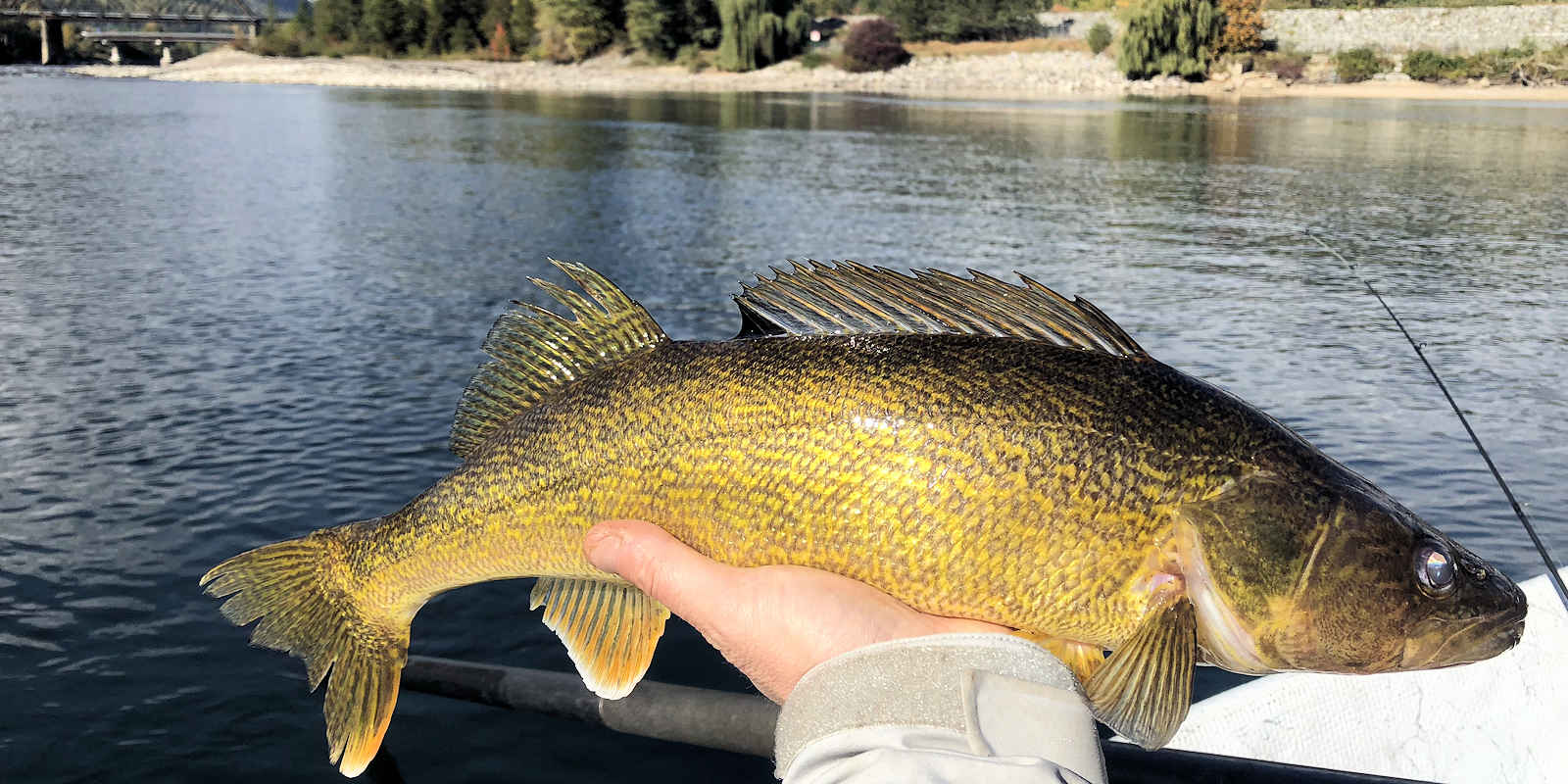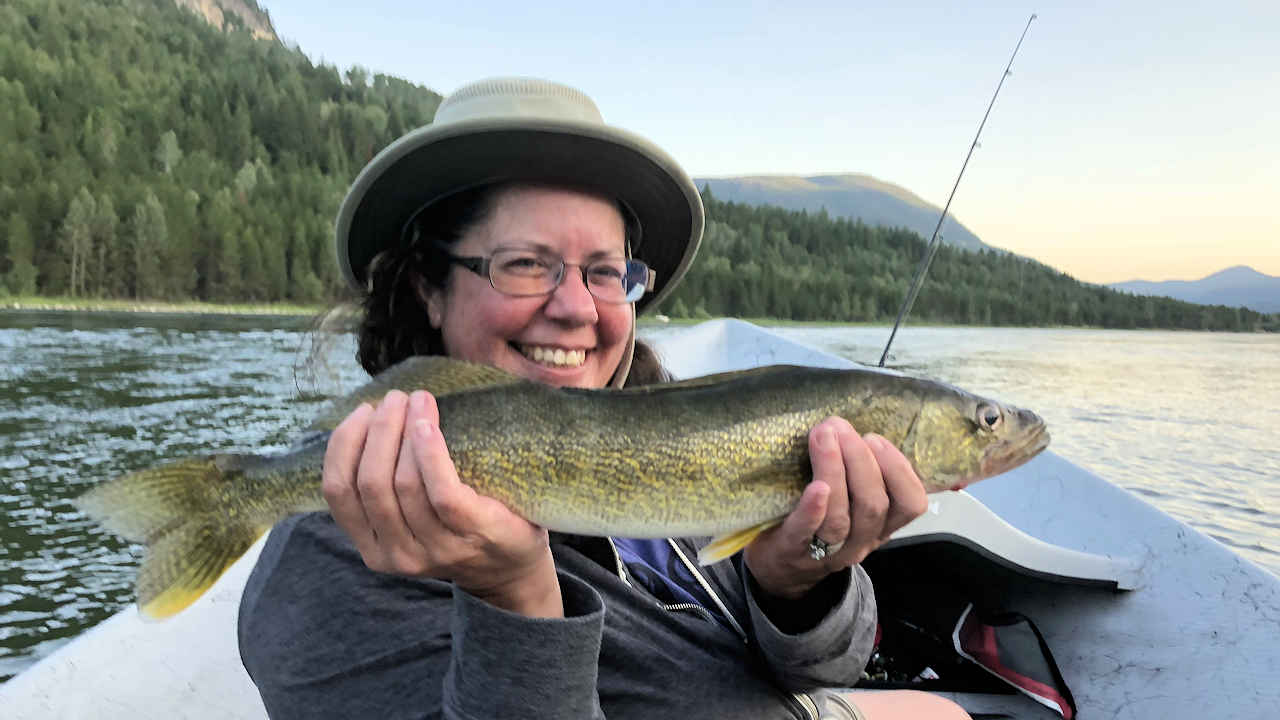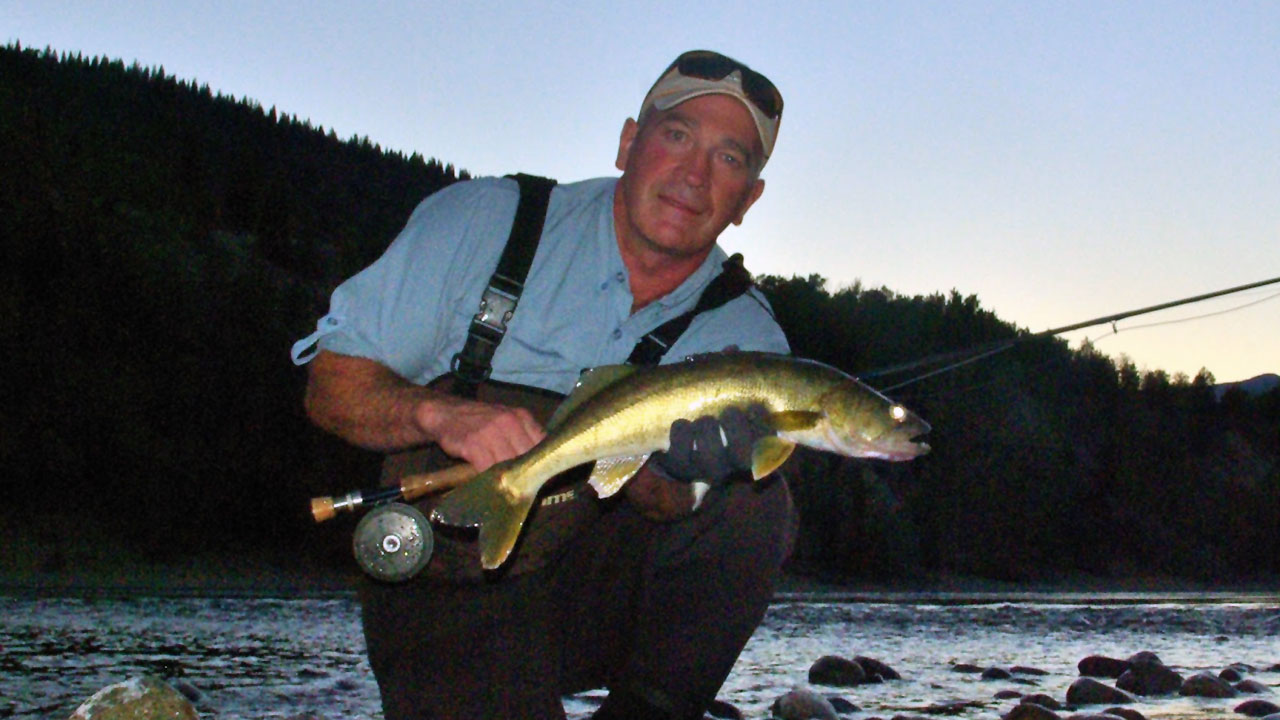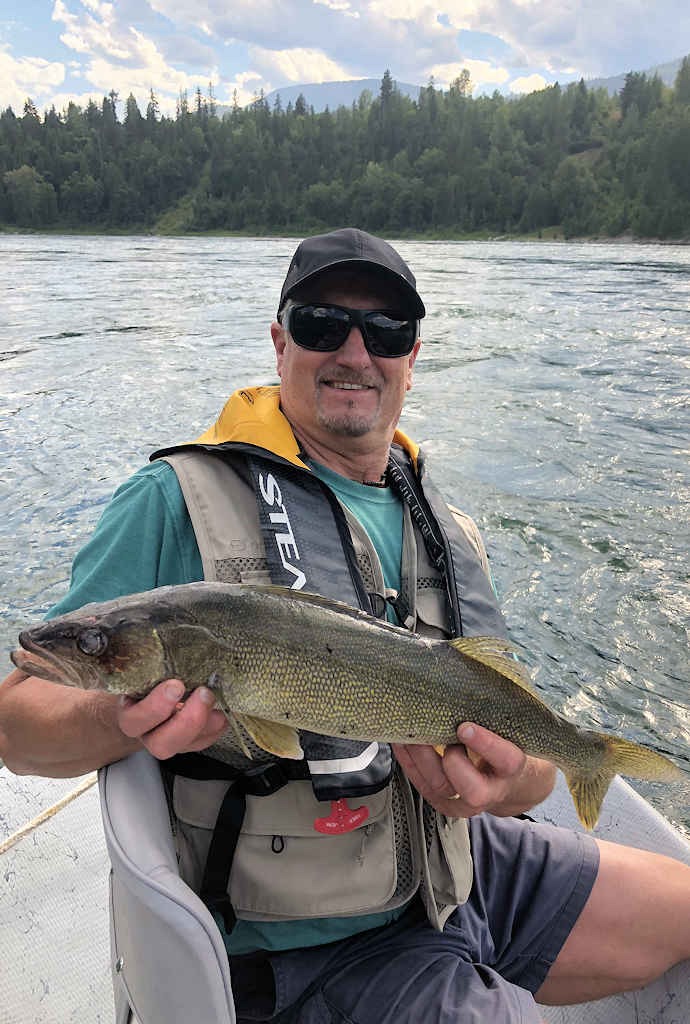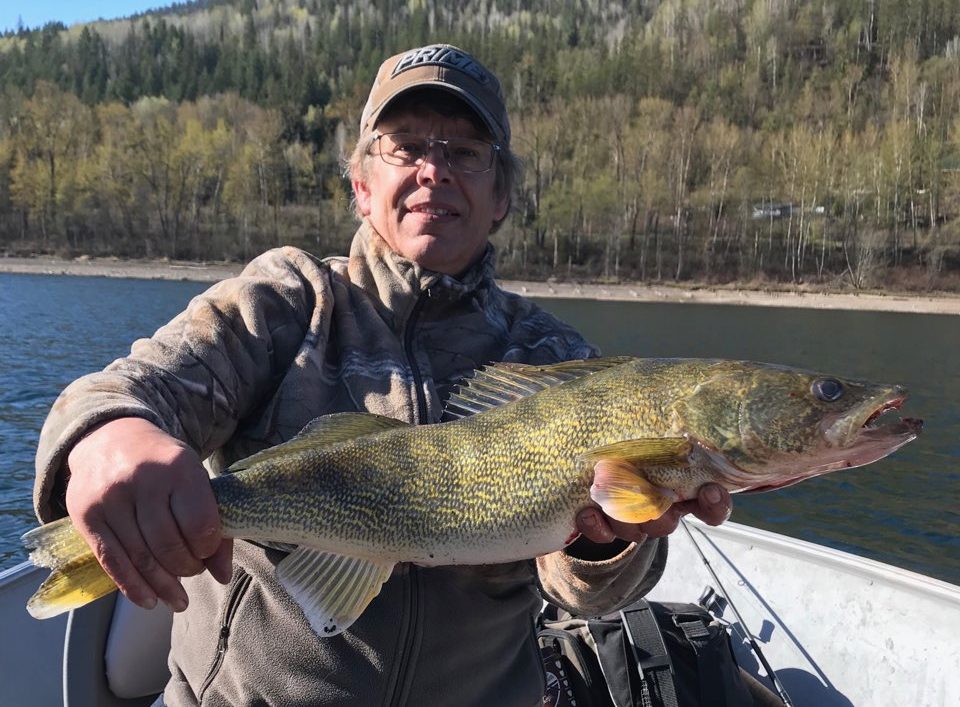Photo By: Chillbilly Sport Fishing Charters
Columbia River Walleye
The Columbia River is one of the best walleye fisheries in Western Canada. Walleye (Sander vitreus) are also known as Yellow Pike, and in Eastern Canada they are known as a Pickerel. No matter what you call them, many consider them to be the best tasting game fish in North America.
The Columbia River regularly produces huge walleye up to 14 pounds, although anglers can expect most walleye to be between two and three pounds. The current daily limit is a generous 16 fish per person.
Walleye get their name as their eyes point outwards. They also have a layer of reflective pigment in their eyes that often makes their eyes appear pearl-coloured or white. This layer helps with light collection allowing the walleye to see very well in low light conditions and dark or choppy water. Walleye are nocturnal in nature and usually feed in the early morning or later in the evening when the light is low.
Walleye are a coarse fish with sharp teeth, dorsal fin and gill plate, so one must be extremely careful when handling them. Walleye are not native to the Columbia River, and all walleye caught should be kept. The river offers abundant food sources for both walleye and trout, so the species co-exist extremely well and both are very healthy. Many anglers choose to target walleye in the morning and rainbow trout in the afternoon.
Targeting Walleye
Walleye are a meat-eating fish that gorge themselves on minnows, leeches, stonefly nymphs, sculpins and anything else that swims. Walleye prefer slow moving water, deep pools, and large back eddies and stay near the bottom between fast and slow water waiting to pounce on passing fish and insects.
Mid-March to early May offers good pre-spawn walleye fishing. As the water warms walleye migrate upstream to build their nest in a short one kilometer stretch of the river near Castlegar. This section is closed to fishing March 1st to June 30 but, the fishing is both open and excellent up-river and down-river.
Anglers slow troll (less than 1.5 mph) for walleye on the Columbia River from the Robson boat launch to the Hugh Keenleyside Dam. The best technique is to use a trolling sinker with about three-feet of leader and wedding ring or spinner tipped with worm. Stay tight to the bottom in water over 30-feet deep and take advantage of your fish finder in locating deep pockets and good holding areas for pre-spawning walleye.
The walleye fishery heats up again in July and August and jigging a 1/4 to 3/4-ounce weight with Mack’s spinners is popular, or using three-way rigs from shore or simply spin-casting deadly dicks near the bottom. Jigheads with rubber twister tails tipped with worm or maggot also work well from shore or jigged on a boat.
For fly fishers, a full sink line with woolly buggers or a large leech pattern retrieved in seams during the late summer and fall are deadly. Walleye tend to school, so if you catch one, there are bound to be more.
Boat fishing can be more productive than shore fishing, but both can be fruitful. The rule of thumb when walleye fishing is the brighter the conditions the deeper the fish, so as the light fades they often move from deep to shallower water.
Mid-July to September are the most productive months for walleye fishing.The walleye can be tracked feeding close to shore in the early morning, then moving into deeper water during the day, before returning to the shallows in the evening.

